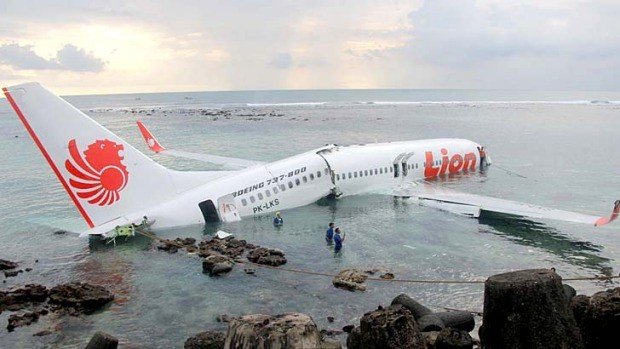You can’t watch the news without hearing about airplane crashes, emergency landings, security issues, computer outages, and grounded planes. This month, some of the United States’ largest airlines suffered a computer outage that led to flight delays and check-in issues.
A spokesperson for American Airlines explained that the now resolved outage was just a “brief technical issue” related to Sabre, the booking software for the reservation system used by most major US airlines. Hundreds of customers nationwide were unable to check in, board their flights, and some couldn’t even get their boarding passes.
Although plane crashes are rare, the two fatal events involving the Boeing 737 MAX 8, launched less than two years ago, have raised serious concerns about the safety of airline travel. The Aviation Safety Network (ASN), in its 2018 statistics report showed 15 fatal airliner accidents, that resulted in 556 fatalities.
ASN also reported that even though the public has seen many high-profile accidents, “2018 was one of the safest years ever for commercial aviation”.
High profile airline disasters cause customers to have understandable concerns and mistrust in the safety of air travel.
Driving Versus Flying Statistics
Given the recent inconveniences and disasters we have all read about airline travel, it is understandable that many may think flying is more dangerous than driving.
Relatively speaking, if you look at driving versus flying statistics, driving is more dangerous. Americans have a:
- 1 in 114 chance of dying in a car accident
- 1 in 9,821 chance of dying from airplane accidents
No matter your reason for traveling, you need to decide how you will get to your destination. Keeping the above statistics in mind, below are some additional factors to consider.
Is It Better to Drive Than Fly?
There can be challenges when traveling, regardless of the method. While flying is generally safer and faster, given the current plane groundings and crashes, some may decide driving is better.
How Much Time Do You Have?
When traveling for business or during busy seasons such as the holidays, time can play a significant role in your decision-making process. In most circumstances, flying is the faster option. However, don’t forget that the time it takes to fly to your desired destination is more than just the time of the flight itself. You also need to consider the following:
- The time it takes to get to the airport
- Possible flight delays
- The boarding process
- Getting through security
- Waiting at baggage claim for your luggage
Add the time it takes for the above to the length of the flight. This will give you a more accurate estimate of how long it will take you to fly somewhere.
Driving usually takes less time if where you are traveling to is only a few hours away by car. But don’t forget that there are events that can also add to your driving time, such as the following:
- Traffic jams that could potentially add several hours to your trip
- Your car could break down requiring you to find a service department to have it repaired
- You can get lost and lose time trying to find your way
- Unpredictable weather can cause hazardous driving conditions
Do You Have a Lot of Luggage?
There is now a cost associated with checking your bags on most airlines. If your luggage is heavy and you have several suitcases plus additional vacation gear, the price will add up and can be quite costly.
When driving, you can bring whatever will fit into your trunk or back seat, if not occupied by passengers. If you pack more than will fit into your car, you can always attach a trailer for extra space.
Is Cost an Issue?
Business trips are generally covered by the company. Vacations, on the other hand, require you to pay your own way. If you plan well, you can start saving money for your next vacation. Try putting a little money away on a monthly basis.
It is usually less expensive to drive than to fly. Add up the costs of gas prices and tolls, and don’t forget to take into consideration the distance you are traveling and your vehicle’s fuel mileage. Compare that to the total cost of round-trip airline tickets, ground transportation, airport parking, and travel insurance.
When it comes to safety, there are risks associated with both flying and driving. Deciding how to travel for your next trip requires you to juggle many different factors to figure out what is most important to you based on your specific situation.


